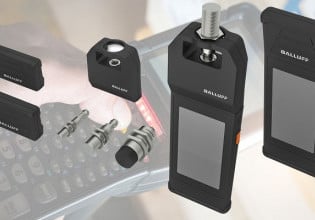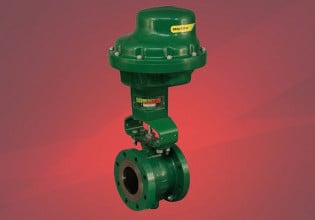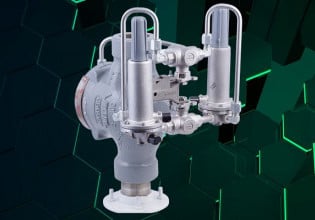What is Machine Guarding?
During national safety month, let's dive into a safety feature required by OSHA: machine guards.
OSHA Machine Guarding Standards
Occupational Safety and Health Administration (OSHA) is the regulatory body in the United States for ensuring labor safety and devises protective methods from a severe or life-threatening injury.
Machine parts, especially moving ones, can harm the human body when they contact each other in a hazardous manner, such as injury, permanent disability, or even death. Industrial machines perform many heavy and complex functions. Various production processes require the machine manufacturer to manufacture machines having high-intensity parameters such as high pressure, temperature, speed, and other harsh conditions.
OSHA provides training about these machine hazards and proposes many different safety features to eliminate or reduce these hazards. Out of many safety features, OSHA emphasizes a great extent on machine guarding.
The OSHA standard for machine guarding aims to reduce machine hazards by implementing different machine guarding procedures. These standards are available as a reference or guidelines for organizations in the United States that falls under OSHA’s jurisdiction. OSHA also provides resources to implement these standards effectively.
The OSHA’s standards for Machine Guarding include:
- General Industry (29 CFR 1910)
- Maritime (29 CFR 1915, 1917, 1918)
- Construction Industry (29 CFR 1926)
- Agriculture Industry (29 CFR 1928)
Now that we’ve covered why machine guarding is important and who overlooks the standards, let’s look into what machine guarding actually is.
What is Machine Guarding?
Machines are fitted with electronic safety devices to ensure safe machine operation. Industrial automation and SCADA are major contributors in safety features with centralized control, and machine guarding remains an integral part of the safety system.

Figure 1. An adjustable guard that has an open/close function so that operators can provide maintenance. Image used courtesy of OSHA
Machine guarding is a method to protect persons from the danger posed by machine parts, especially moving parts. The threat is not limited to a machine’s abnormal behavior; a machine running within its acceptable conditions can become fatal to humans present.
Some prominent characteristics of machine guarding include the following.
- The machine guard should not obstruct the machine operation. It should also avoid hindering the operator’s access to the standard control and different parts.
- The machine guard material should be solid and durable. The material must withstand extreme conditions associated with the machine operation, such as high temperature and large movements. The machine guards must firmly attach to the machine, should not become loose, break, or deformed during machine operation.
- The machine guards should be tamper-free and cannot be bypassed or easily removed. They can only be removed with tools or special skills, if required, such as during maintenance activity by the engineering department.
- Electronic instruments monitor and enforce the machine guards. This includes activating the machine guarding system through sensors. The sensors stop the machine operation trigger an alarm when any guard is open, and are identified on the main display. It prevents machine operation when the guard does not activate or is removed from its place.
Each of these characteristics is built into different types of machine guards. Let’s dive into the four types of machine guards.
Types of Machine Guards
Guards on the machines act as a barrier between humans and different machine parts. They are made up of material capable of withstanding force, sharp edge, and moving part impact.
There are four types of machine guards installed on a machine: fixed, interlocked, adjustable, and self-adjusting. Let’s look briefly at each type.
Fixed Guard
The fixed guard is fixed on the machine and cannot move nor be replaced. Its function is not dependent on any machine’s part movement and independently acts to provide safety. It is simple to install and does not require automation or mechanical integration for its function. Its construction material can be metallic, plastic, or wire, depending on the required protection.

Figure 2. Example of a fixed guard. Image used courtesy of Loureiro
Fixed guarding provides safety against most machine parts and can be adjusted to every machine part. During maintenance, fixed guards are removed to access the desired part. Removing machine guards can be dangerous for the maintenance personnel when operating a machine for fault analysis.
Interlocked Guard
Interlocked guards are synchronized with the machine’s operation. The guard’s interlocking mechanism stops the machine operation whenever the guard is open. Without closed guards, the machine cannot start its operation.
The interlocking guards are installed on the machine parts requiring adjustment during machine operation.
As the operator opens the guard, machine operation stops, enabling the operator to make adjustments safely. When adjustments are made, the operator closes the machine guard to continue machine operation. During maintenance, these guards are not permanently removed. Instead, the maintenance personnel can perform the maintenance by simply opening the guards.
The interlocking is provided by different mechanisms such as sensors, switches, or mechanical systems, called safety devices. These safety devices send feedback to the central controller. When the main controller receives a signal of closed guards from these devices, the machine operates normally. When the central controller senses the open guard through these safety devices, it stops the machine without completing the ongoing cycle or current process.
Adjustable Guards
Adjustable guards are like fixed guards, permanently fixed on the machine. The operator can adjust them to fit different parts, sizes, and operations. These guards affix to the machine through the locking mechanism, keeping them in the locked position. When the guards are removed, the lock must be unlocked.
Operators can easily remove adjustable guards before or during operation, and no preventive method exists to prevent their removal. This makes them potentially easier to work around than fixed guards.
Self-adjusting Guards
Self-adjustable guards adjust themselves to perform operational activities such as the feeding of packaging material during machine operation. Self-adjustment guards are provided with a small opening with a moveable section. As the operator pushes the material in, the section moves with the material. The opening depends on the amount of material going inside the section.

Figure 3. An example self-adjusting guard. Image used courtesy of Prismont
The section or opening returns to its normal position when the material is removed. Self-adjusting guards may require frequent maintenance because they frequently move with the material.
Companies should always have safety in mind as a priority, especially because OSHA requires it. One way to tackle this priority is machine guarding. Machine guards can be broken down into four types, with many characteristics. Fixed guards, interlocked guards, adjustable guards, and self-adjusting guards all have their advantages and disadvantages. Which machine guard do you have implemented in your facility?






